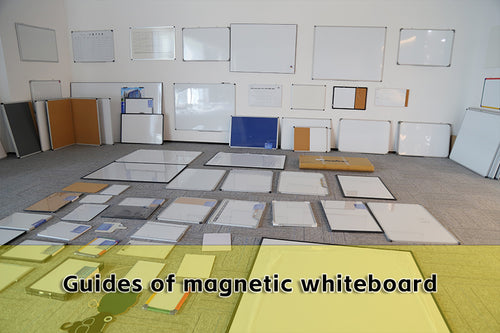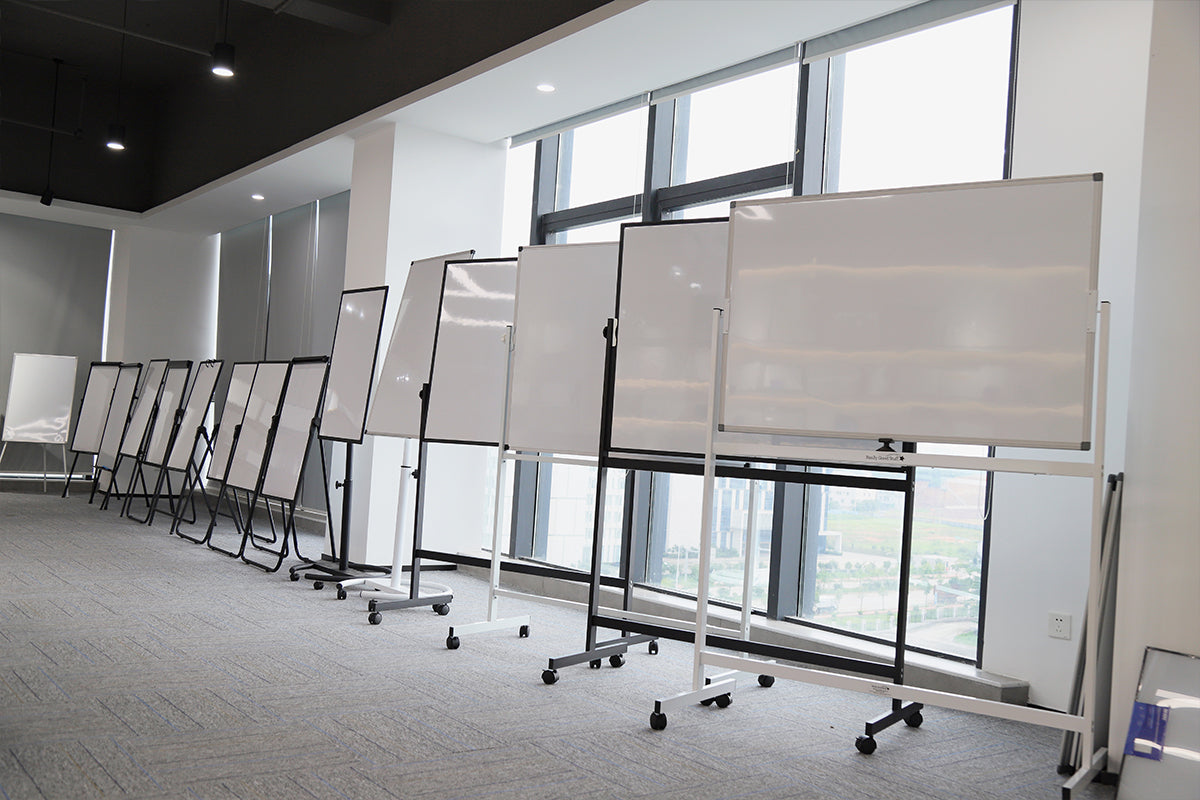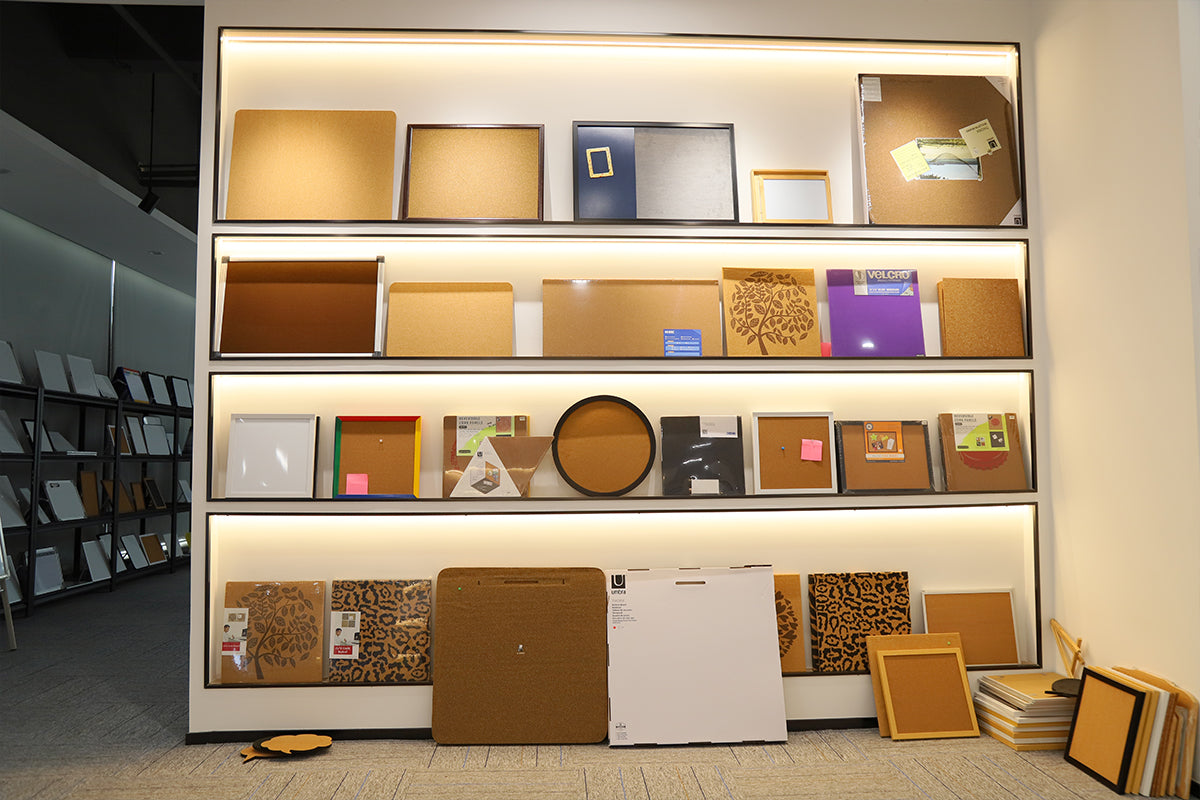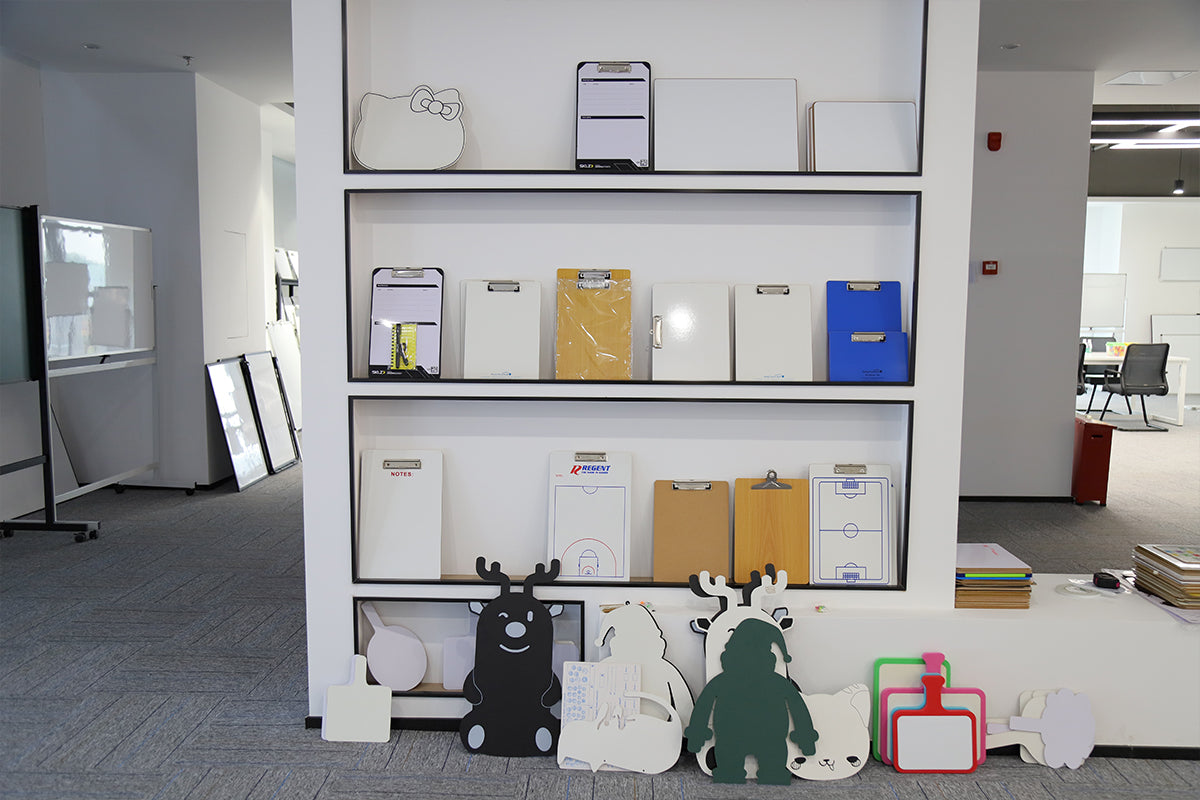Distinguishing Between Hard and Soft Whiteboards: Understanding Magnetic Properties
Whiteboards, also known as dry erase boards, are versatile tools used for communication and collaboration in various settings. There are two primary types of whiteboards: hard whiteboards and soft whiteboards. One key distinction between the two lies in their magnetic properties.
 Hard whiteboards, typically made of materials like porcelain, melamine, or glass, do not possess inherent magnetic properties. However, the writing surface of hard whiteboards is often made of steel, allowing them to be magnetic receptive. This means that magnets can be used to attach papers, notes, or other magnetic items to the surface of a hard whiteboard. While hard whiteboards are durable, easy to clean, and long-lasting, their magnetic capabilities are limited to the steel surface.
Hard whiteboards, typically made of materials like porcelain, melamine, or glass, do not possess inherent magnetic properties. However, the writing surface of hard whiteboards is often made of steel, allowing them to be magnetic receptive. This means that magnets can be used to attach papers, notes, or other magnetic items to the surface of a hard whiteboard. While hard whiteboards are durable, easy to clean, and long-lasting, their magnetic capabilities are limited to the steel surface.
On the other hand, soft whiteboards, also known as magnetic whiteboards, are made of a flexible material that is inherently magnetic. Similar to magnets, soft whiteboards can attract and adhere to metal surfaces, allowing users to attach magnetic items directly to the board. This feature enhances the functionality of soft whiteboards, making them ideal for displaying documents, photos, and other magnetic materials in a convenient and organized manner. In addition to their magnetic properties, soft whiteboards are lightweight, portable, and easy to reposition, making them suitable for dynamic environments where flexibility is key. Soft whiteboards are commonly used in classrooms, offices, and homes for interactive presentations, brainstorming sessions, and creative activities. On the other hand, hard whiteboards with magnetic steel surfaces offer a sturdy and reliable option for users who require both a durable writing surface and magnetic capabilities.
In summary, the main difference between soft whiteboards and hard whiteboards lies in their magnetic properties. Soft whiteboards are inherently magnetic, allowing them to attract and adhere to metal surfaces like magnets. In contrast, hard whiteboards do not possess intrinsic magnetic properties but have a steel writing surface that can be magnetically receptive. The choice between soft and hard whiteboards depends on the specific needs and preferences of the user, with soft whiteboards offering enhanced magnetic functionality for versatile usage.

On the other hand, soft whiteboards, also known as magnetic whiteboards, are made of a flexible material that is inherently magnetic. Similar to magnets, soft whiteboards can attract and adhere to metal surfaces, allowing users to attach magnetic items directly to the board. This feature enhances the functionality of soft whiteboards, making them ideal for displaying documents, photos, and other magnetic materials in a convenient and organized manner. In addition to their magnetic properties, soft whiteboards are lightweight, portable, and easy to reposition, making them suitable for dynamic environments where flexibility is key. Soft whiteboards are commonly used in classrooms, offices, and homes for interactive presentations, brainstorming sessions, and creative activities. On the other hand, hard whiteboards with magnetic steel surfaces offer a sturdy and reliable option for users who require both a durable writing surface and magnetic capabilities.
In summary, the main difference between soft whiteboards and hard whiteboards lies in their magnetic properties. Soft whiteboards are inherently magnetic, allowing them to attract and adhere to metal surfaces like magnets. In contrast, hard whiteboards do not possess intrinsic magnetic properties but have a steel writing surface that can be magnetically receptive. The choice between soft and hard whiteboards depends on the specific needs and preferences of the user, with soft whiteboards offering enhanced magnetic functionality for versatile usage.












